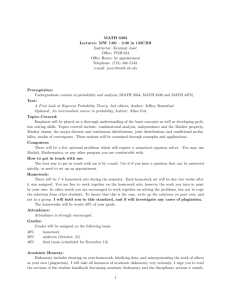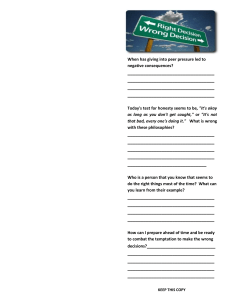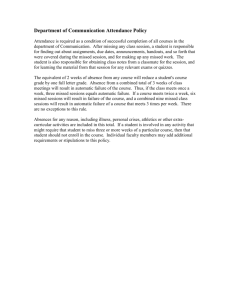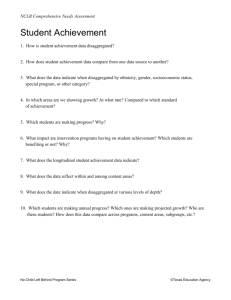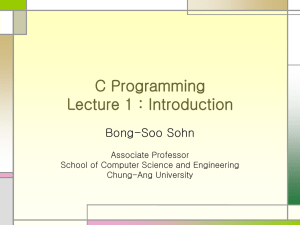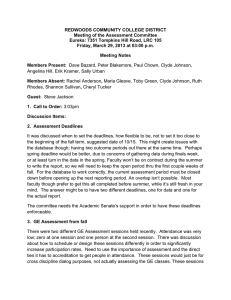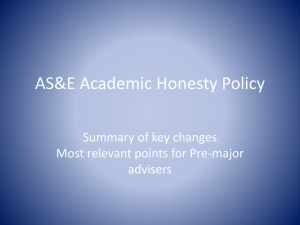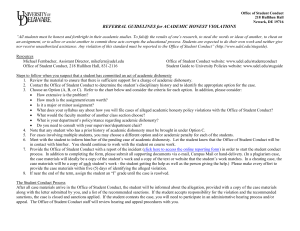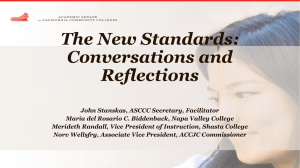A Call to Action
advertisement
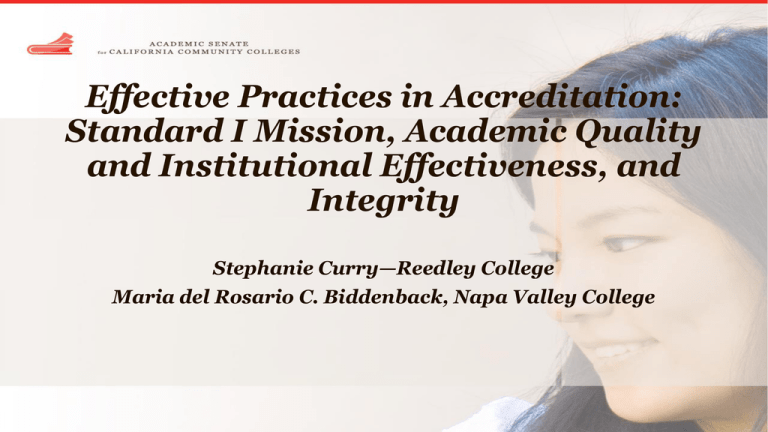
Effective Practices in Accreditation: Standard I Mission, Academic Quality and Institutional Effectiveness, and Integrity Stephanie Curry—Reedley College Maria del Rosario C. Biddenback, Napa Valley College Breakout Outcome Attendees discuss Standard I and effective practices for meeting relevant ACCJC eligibility requirements and policies. 2 ASCCC Paper Effective practices in Accreditation: A Guide to Support Colleges in the Accreditation Cycle (Adopted Fall 2015) 3 Standard IA: Mission • Makes sure that all college programs and services align with the mission • Mission must contain: broad educational purpose, intended student population, types of degrees and certificated offered (need to address if in the bachelors degree pilot) and a commitment to student learning and achievement • Mission must be linked to: Decision Making, Planning and Resource Allocation • Achievement of the mission must be qualitatively and quantitatively shown through data and data analysis 4 Effective Practices: IA • Review your mission systematically, not just the year before a visit. • Reference you mission in all your planning documents • Use the mission as a guiding force for resource allocation • Publish the mission far and wide on campus in documents to the public • Require each program to write how they address the mission through the program review process • Identify specific data that can show college is meeting its mission 5 Standard IB: Academic Quality and Institutional Effectiveness • Focus on Data and Dialog • Data: • Student Learning Outcomes • Student Equity Data • Achievement Data • Intuitional Set Standards • Disaggregated Data • Dialog: • Indentify Performance Gaps • Implement Improvement Plans 6 Effective Practices: 1B • Identify processes and procedures for collecting and analyzing and using outcome data for student learning and achievement • Collect disaggregated data on achievement of student learning outcomes and use that data in discussions of student equity • Create and assess intuitional set standards • Identify short and long-range needs based on data 7 Standard IC: Institutional Integrity • Providing Clear and Accurate information to faculty, staff, students and the public. • Information should be provided: • Online • College Catalog • Correspondence with the Commission • Need to regularly review its policies, procedures and publications • Academic Freedom and Academic honesty/dishonesty 8 Effective Practices: IC • Confirm all information in institutional documents and publications are clear and accurate • Confirm that students can complete degrees and certificated in a reasonable time • Make sure that the college/district has an academic freedom statement, a policy on academic integrity (including academic honesty/dishonesty) • Provide evidence that policies and procedures are followed. 9 Eligibility Requirements linked to Standard I • ERs • • • • • • 6 (Mission) 11 (Student Learning and Achievement) 13 (Academic Freedom) 19 (Institutional Planning and Evaluation) 20 ( Integrity in Communication with the Public) 21 ( Integrity in Relations with the Accrediting Commission) 10 Widely distribute and Publish • Need to widely distribute data and information related to Standard I • Information should be distributed to faculty, staff, administration and the community 11 Faculty Involvement in Standard I • Faculty (Academic Senates) should be involved through: • • • • • • • Assessment of the current mission and revisions Making sure that the mission is part of the program review process Producing, Collecting and Reviewing Student learning outcomes Identify strategies for improvement based on data and dialog Creating and discussion of Institutional Set Standards Reviewing the colleges Academic Freedom Policy Crafting academic dishonesty policy (cheating and plagiarism) 12 “ QUESTIONS? 13
